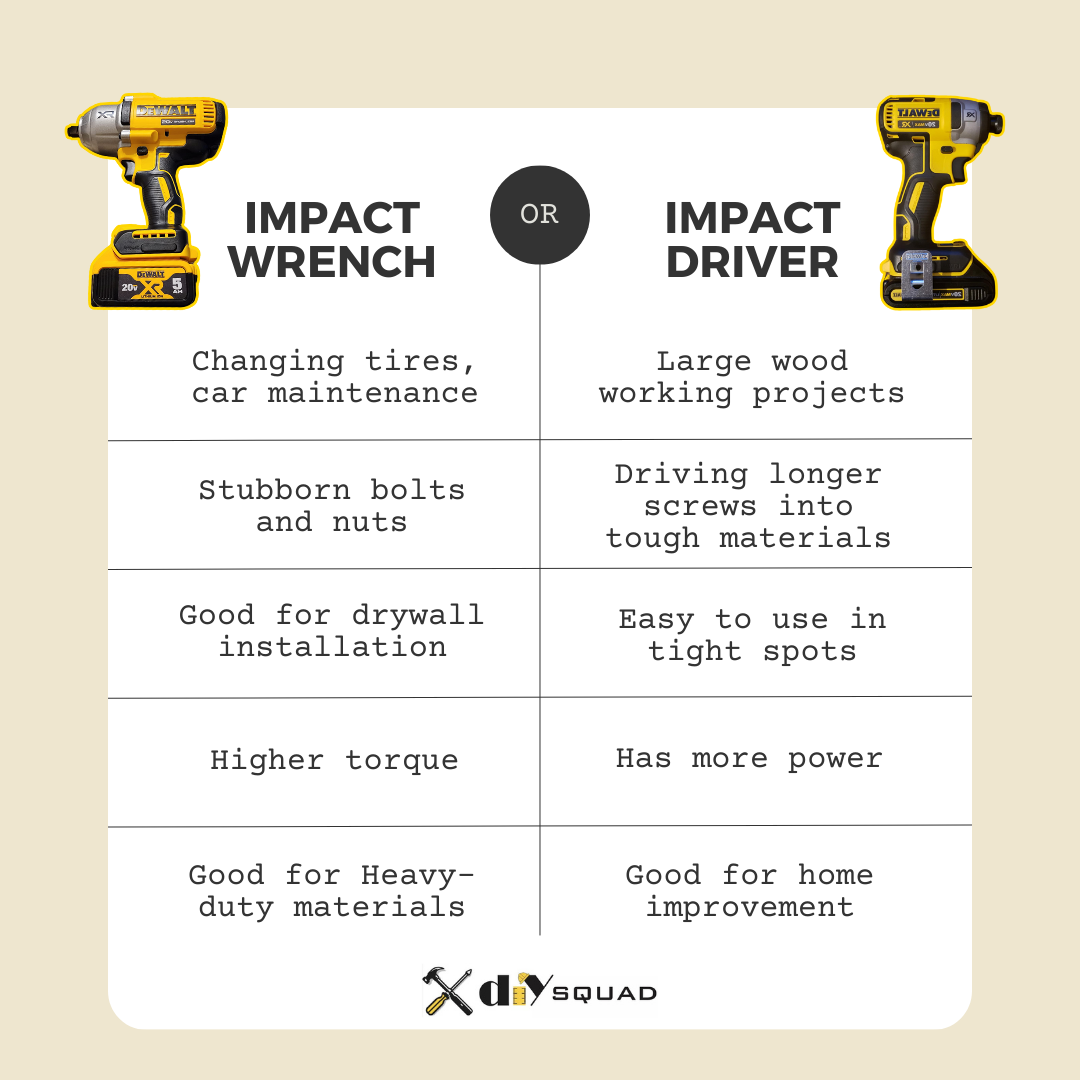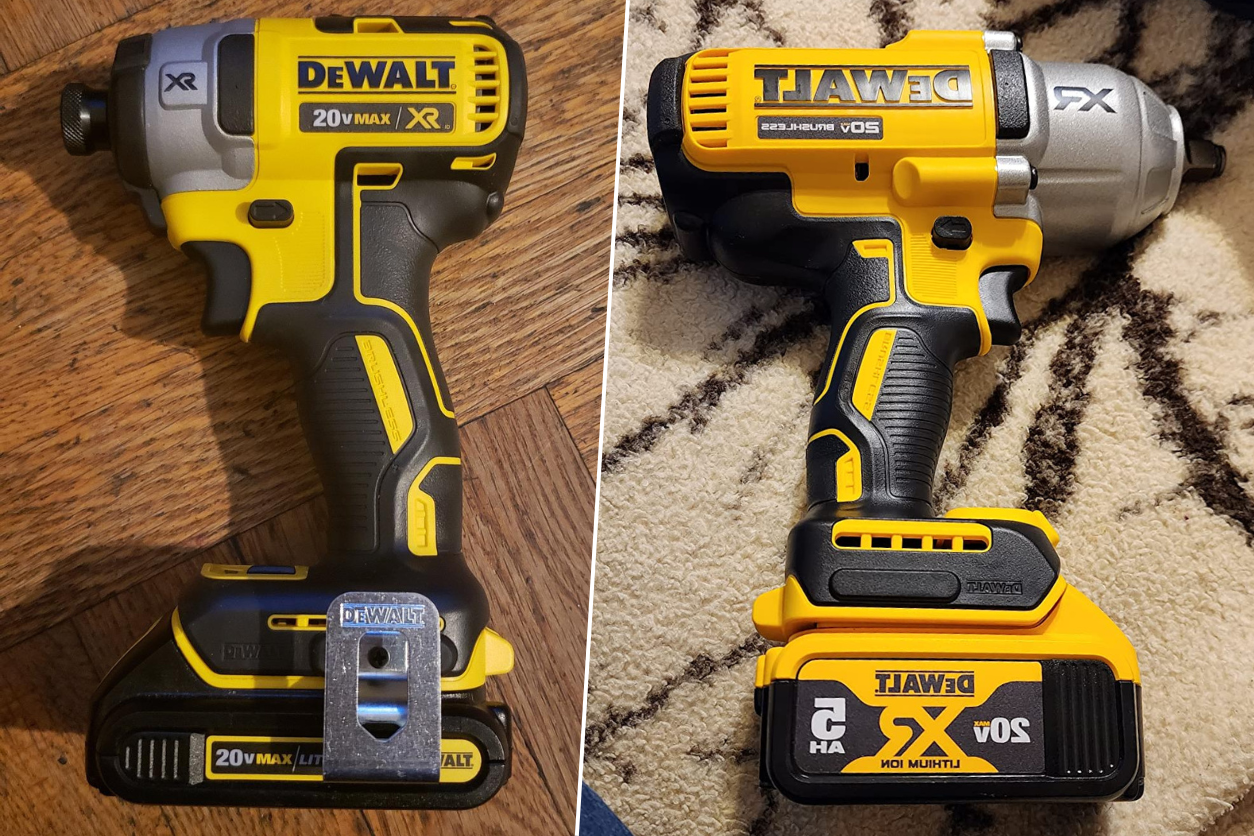There’s a certain satisfaction that comes from working on a project with your own two hands, whether you’re fixing up an old car or tackling a home improvement task. But anyone who’s spent time with tools knows that having the right ones can be the difference between a job well done and a frustrating day. This is because not all power tools are created equal. This is especially true when you’re comparing an impact wrench vs impact driver. These two tools might look alike but serve very different purposes.
Related: 9 Woodworking Tools Every DIYer Must Have in Their Kit
What Is an Impact Wrench?
An impact wrench is a tool that’s all about brute strength. It’s designed to deliver high torque, making it perfect for loosening and tightening bolts, especially those that are rusted or over-tightened. The impact wrench uses a hammering mechanism that provides a strong rotational force. This allows it to tackle tougher jobs that a regular wrench or even a standard drill might struggle with.
The impact wrench is most commonly used in automotive work, where you often need to deal with lug nuts or other heavy-duty fasteners. If you’ve ever watched a pit crew at a race, you’ve seen them use impact wrenches to quickly remove and replace tires. That’s because the tool’s high torque and efficiency make it indispensable in situations where speed and power are crucial.
One of the key characteristics of an impact wrench is its square drive, which typically comes in sizes like 1/2-inch or 3/8-inch. This allows the wrench to fit snugly onto sockets, making it ideal for working with nuts and bolts of various sizes. However, this also means that an impact wrench is less versatile for tasks that don’t involve these specific fasteners.
What Is an Impact Driver?
While an impact wrench is all about power, the impact driver offers a more balanced approach, combining torque with speed. It’s designed primarily for driving screws and bolts, but it’s also versatile enough to handle a variety of other tasks. The impact driver uses a similar hammering mechanism to the impact wrench. But it’s typically less powerful and more focused on speed and control.
The impact driver shines in woodworking and general construction, where you need to drive screws quickly and efficiently. It’s particularly useful when you’re working with tougher materials like hardwood or when you need to drive long screws that would be difficult to handle with a regular drill. The compact design of the impact driver also makes it easier to maneuver in tight spaces. This is a big plus when you’re working on intricate projects.
Unlike the impact wrench, the impact driver features a 1/4-inch hex collet, which is designed to hold bits securely. This makes it easy to switch between different screw-driving bits for quick changes during a project. The impact driver’s ability to handle a range of screw sizes and types makes it a versatile tool.
Impact Wrench vs. Impact Driver: When to Use Each Tool
Now that we’ve covered the basics of what each tool does, let’s talk about how to choose between them. The decision really comes down to the type of work you’re doing and the specific demands of your project.

If you’re working on a job that requires high torque, such as automotive repairs or heavy-duty construction, the impact wrench is your best bet. Its ability to deliver a powerful rotational force makes it ideal for loosening and tightening large bolts and nuts. However, keep in mind that the impact wrench is a more specialized tool. It’s great for specific tasks, but it’s not as versatile as an impact driver.
For woodworking, general construction, or tasks that require driving a lot of screws, an impact driver is what you’ll need. It offers a good balance of torque and speed, making it effective for a wide range of applications. The impact driver is also more compact and easier to handle, which can be a significant advantage when you’re working in confined spaces or on more detailed projects.
In terms of versatility, the impact driver has the upper hand. While the impact wrench is somewhat limited to tasks involving nuts and bolts, the impact driver can be used for a broader range of jobs, from assembling furniture to installing shelves. The impact driver’s lower torque output means it might struggle with the heaviest-duty tasks, where an impact wrench would excel.
Making the Right Choice
Ultimately, the choice between an impact wrench and an impact driver comes down to the demands of your projects. If you frequently work with bolts and nuts, especially in automotive or heavy-duty construction, impact wrench is a must-have tool. Its raw power makes it indispensable for these types of tasks.
However, if your work involves a wider range of tasks, particularly those that require driving screws, the impact driver is the more versatile option. It offers enough torque to handle most jobs while also providing the speed and control you need for precise work. Plus, its compact size and ease of use make it a great choice for both professionals and DIY enthusiasts.
In many cases, having both tools in your arsenal is the best solution. This way, you’re equipped to handle a variety of tasks, from the heaviest-duty jobs to more intricate work. Each tool has its strengths, and by understanding the differences between them, you can make an informed decision about which one to use for your next project.
